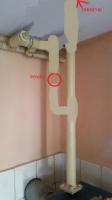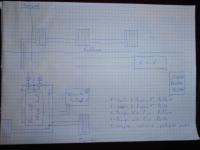nautes. I read your posts and it looks like you know what's going on, but weird / incomprehensible / etc ... and you explain it.

You use mental shortcuts and then the flowers that "collected" by colleague Jerzykowski come out.
There is nothing to be in a hurry. People and fahofcyi are smarter and they will install thermostatic valves in the installation with a coal-fired boiler or the latter + thin tubes (colleague Grzegorz Siemienowicz wrote great - drinking straws) + panel heaters, because if there is a lot of water in the installation, you need to heat it and are ... losses (?!)
It is better to put the pump on the supply (there is no need to worry about the temperature with today's pumps) because, as a rule, the operation of the pump causes smaller fluctuations in the water level in the expansion vessel.
Hardly anyone takes into account the increase in the capacity of the vessel needed when installing the pump.
nautes wrote: I repeat again: the point of connection with the tank is the zero / starting point of the system pressure.
This is the easiest way to calculate, but who does it ??? On the other hand, with thermostatic valves on radiators, all the calculations go to the head, sometimes along with the "departing" overheated installation.
Jerzykowski wrote: And what if someone puts on thermostats that close and the pump has nowhere to pump water? And what if there will be a strong wind that draws the flames inside the chimney and burns so intensely that the excess heat has nowhere to go? I know an extreme case, but it is possible.
The case is not so extreme! I have dealt with him personally.
PS. I don't remember where does this requirement of 0.7 pump head come from ???
Why not 0.9 or 0.6 ??? After all, what pressures appear in the installation depends on the flow resistance and the size of the flow. And they are added or subtracted from the static pressure "caused" by the length of the expansion pipe.
Maybe someone will enlighten me.




